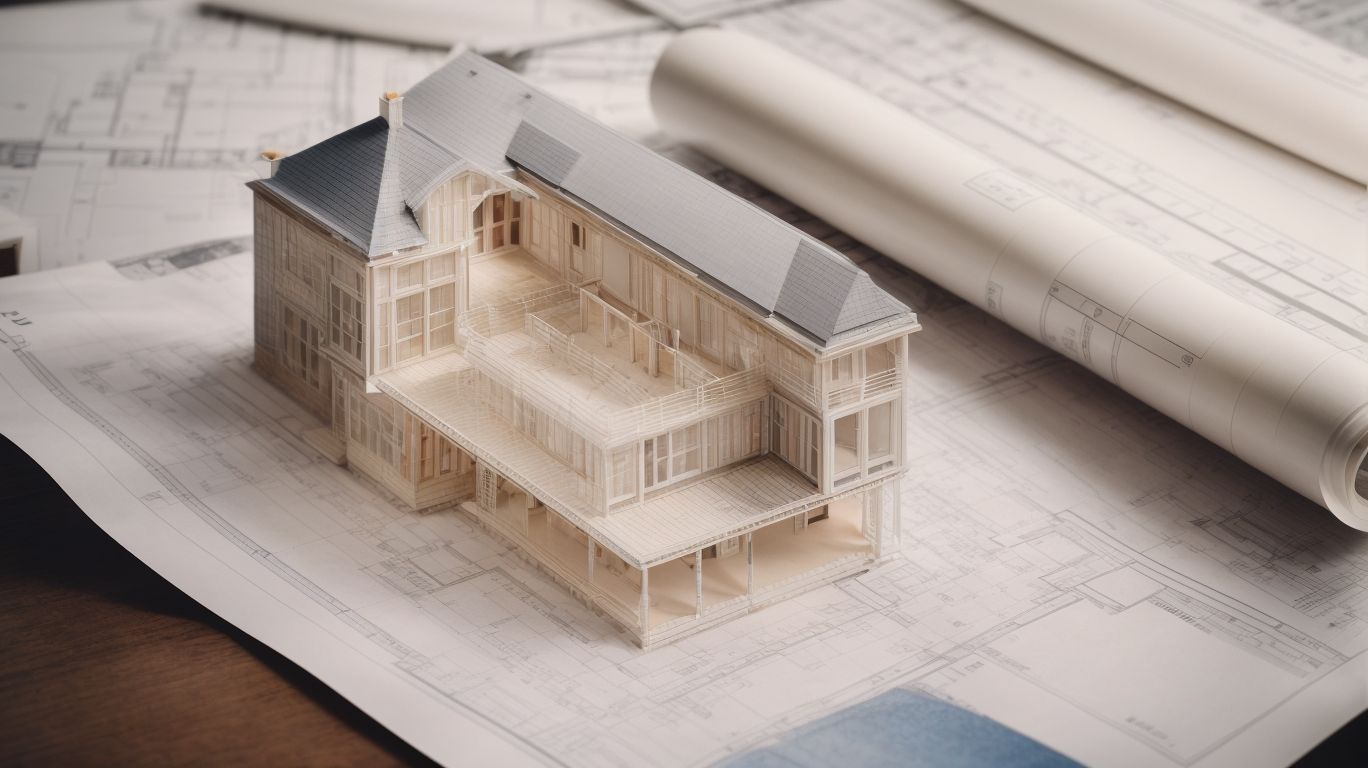
Eco-Friendly Home Remodeling: Insights from a SF Structural Engineer
Welcome to the ultimate guide to eco-friendly home remodeling, where we will delve into the importance, benefits, and practical methods of making your home renovation environmentally sustainable. As a structural engineer based in San Francisco, I have witnessed the growing demand for eco-friendly remodeling solutions.
In this article, we will explore the significance of eco-friendly home remodeling, debunk common misconceptions, and provide insights into finding a reliable structural engineer for your project. We will also discuss the various ways in which you can make your home remodeling eco-friendly, such as using sustainable materials, opting for energy-efficient appliances, installing solar panels, incorporating natural lighting, and considering water-efficient fixtures.
We will showcase examples of eco-friendly home remodeling projects, including:
- Green roof installation
- Energy-efficient window replacement
- Solar water heater installation
- Low-flow toilet installation
- Sustainable flooring options
Whether you’re a homeowner looking to reduce your carbon footprint or a renovation professional seeking to integrate sustainable practices into your projects, this comprehensive guide will equip you with the knowledge and resources necessary to embark on a successful eco-friendly home remodeling journey. So, let’s embark on this insightful exploration of eco-friendly home remodeling and take a step towards a greener, more sustainable future for our homes and the planet.
What is Eco-Friendly Home Remodeling?
Eco-Friendly Home Remodeling refers to the process of renovating or improving a home using sustainable and eco-conscious practices, materials, and technologies to minimize environmental impact and promote energy efficiency, creating a healthier and more sustainable living space for homeowners.
By incorporating eco-friendly materials such as recycled wood, bamboo, cork, and sustainable flooring options, eco-friendly home remodeling reduces the consumption of precious natural resources. Energy-efficient appliances, solar panels, and proper insulation techniques contribute to lower energy consumption, leading to reduced carbon footprint and lower utility bills.
This mindful approach not only benefits the environment but also enhances the indoor air quality and overall well-being of the inhabitants, making it a compelling choice for eco-conscious homeowners.
Why is Eco-Friendly Home Remodeling Important?
Eco-Friendly Home Remodeling is crucial due to its significant impact on reducing the carbon footprint, promoting sustainable living, and conserving energy, thus contributing to environmental sustainability and the well-being of current and future generations.
By adopting eco-friendly home remodeling practices, individuals not only reduce their environmental impact but also create a healthier living environment within their own homes. This includes using sustainable materials, improving insulation, and implementing energy-efficient appliances, which collectively reduce energy consumption. Eco-friendly remodeling encourages the use of renewable energy sources, such as solar panels and wind turbines, further minimizing reliance on fossil fuels and reducing greenhouse gas emissions. Embracing these sustainable living practices extends beyond benefiting the individual homeowner, positively impacting the greater environment and fostering a more sustainable future.
What are the Benefits of Eco-Friendly Home Remodeling?
Eco-Friendly Home Remodeling offers numerous benefits, including the creation of sustainable living spaces, the use of green building practices, integration of renewable energy solutions, and the adoption of eco-conscious and energy-efficient appliances, enhancing both environmental and personal well-being.
By utilizing sustainable architecture, homeowners can significantly reduce their carbon footprint and promote a healthier environment. Incorporating green building practices not only minimizes waste but also decreases energy consumption. Renewable energy solutions, such as solar panels and geothermal systems, contribute to lower utility bills and a more sustainable lifestyle.
The integration of energy-efficient appliances results in reduced electricity usage, cost savings, and decreased environmental impact, making eco-friendly home remodeling a compelling choice for those looking to enhance their living spaces while prioritizing sustainability.
How Can You Make Your Home Remodeling Eco-Friendly?
Making your home remodeling eco-friendly involves adopting sustainable solutions, utilizing eco-friendly technology, making eco-conscious choices, and integrating energy-efficient systems to ensure a greener and more sustainable living environment.
By focusing on sustainable materials, such as bamboo flooring or reclaimed wood, you can reduce the environmental impact of your renovations. Incorporating energy-efficient appliances and LED lighting can significantly lower energy consumption. Consider installing solar panels or a green roof to harness renewable energy and enhance insulation. Selecting low VOC paints and natural finishes further contributes to a healthier indoor air quality. These eco-friendly approaches not only benefit the environment but also create a more comfortable and sustainable living space for you and your family.
Use Sustainable Materials
Using sustainable materials is a key aspect of eco-friendly home remodeling, involving the selection and utilization of sustainable building materials and construction practices to create an environmentally conscious and durable remodel.
Such materials contribute to reducing the environmental impact, conserving natural resources, and promoting healthier indoor air quality. Sustainable design integrates energy-efficient systems, natural lighting, and passive heating and cooling techniques, further enhancing the overall environmental performance of the home.
Sustainable building materials like bamboo, reclaimed wood, recycled glass, and low-VOC paints not only minimize waste but also offer durability and aesthetics. Adopting sustainable construction practices such as efficient waste management and responsible sourcing of materials bolsters the eco-friendliness of the renovation project, aligning it with green building standards and certifications.
Opt for Energy-Efficient Appliances
Opting for energy-efficient appliances is essential in eco-friendly home remodeling, as it contributes to energy conservation, sustainable design, and the overall efficiency of the remodel, providing long-term environmental and economic benefits.
These appliances are designed to consume less energy, leading to reduced utility bills and a lower environmental impact. Integrating energy-efficient appliances into a home’s design promotes sustainable living and can significantly decrease the carbon footprint. Their use also aligns with eco-conscious practices, making them a crucial aspect of modern home remodeling projects aimed at creating environmentally responsible and cost-effective living spaces.
Install Solar Panels
Installing solar panels is a sustainable solution for eco-friendly home remodeling, offering renewable energy solutions that reduce reliance on traditional energy sources, contributing to a greener and more sustainable living environment.
By harnessing the power of the sun, solar panel installation not only decreases the carbon footprint of a household but also provides long-term cost savings on energy bills. Solar panels enhance the value of a home and qualify for various incentives and tax credits, making them an attractive investment. With advancements in technology, the efficiency of solar panels has improved, making them a viable and reliable source of energy for homeowners looking to make a positive impact on the environment while lowering their energy costs.
Incorporate Natural Lighting
Incorporating natural lighting is an eco-friendly practice in home remodeling that enhances energy efficiency, promotes sustainable living, and represents a green upgrade to the living space, creating a more environmentally conscious and comfortable home environment.
This approach not only reduces the reliance on artificial lighting, lowering energy consumption and utility costs, but it also contributes to a healthier atmosphere, as natural light has been linked to improved mood and productivity. Utilizing natural light can also reduce the need for excessive heating and cooling, thus lowering the overall energy demand and carbon footprint of the home. In today’s sustainable living trends, incorporating natural lighting is a significant step towards creating a greener and more energy-efficient home.
Consider Water-Efficient Fixtures
Considering water-efficient fixtures is an eco-friendly choice in home remodeling, providing sustainable alternatives that conserve water, reduce environmental impact, and promote eco-friendly practices within the living space.
These fixtures can significantly contribute to water conservation by utilizing advanced technologies that minimize water wastage without compromising functionality. They play a vital role in creating a more sustainable living environment by reducing the strain on local water resources and lowering utility bills.
Choosing water-efficient fixtures demonstrates a commitment to environmental responsibility and sets a positive example for others to follow, thus fostering a culture of conservation. By incorporating these fixtures into home remodeling projects, individuals can make a tangible difference in promoting a greener and more eco-conscious way of living.
What Are Some Common Misconceptions About Eco-Friendly Home Remodeling?
There are several common misconceptions about eco-friendly home remodeling, including concerns about the cost, effectiveness compared to traditional methods, and perceptions of being time-consuming, which often lead to misconceptions about the process and the expertise of eco-friendly contractors.
Many people assume that eco-friendly materials are more expensive, but in reality, their prices have become increasingly competitive. Eco-friendly methods have proven to be just as effective, if not more so, than traditional remodeling techniques.
As for the misconception about the time-consuming nature of eco-friendly renovations, advancements in technology and practices have streamlined the process, allowing for efficient and timely completion of projects. It’s essential to dispel these myths and consider the benefits of eco-friendly home remodeling.
It’s Too Expensive
One common misconception about eco-friendly home remodeling is the belief that it is too expensive, however, there are numerous sustainable renovation ideas and eco-friendly home design options available that offer cost-effective and environmentally conscious solutions for homeowners.
These options include using energy-efficient appliances, installing smart thermostats, and incorporating sustainable materials such as bamboo or reclaimed wood for flooring and cabinetry. Reusing existing materials and furniture can minimize costs while reducing waste. Implementing proper insulation and utilizing natural light through well-placed windows can also contribute to energy savings in the long run.
By exploring these budget-friendly eco-friendly home remodeling strategies, homeowners can achieve a sustainable and stylish living space without breaking the bank.
It’s Not as Effective as Traditional Methods
Another misconception about eco-friendly home remodeling is the perception that it is not as effective as traditional methods, whereas in reality, eco-friendly building practices contribute significantly to environmental sustainability and offer long-term benefits that surpass traditional approaches.
By incorporating sustainable materials, energy-efficient systems, and innovative design techniques, eco-friendly home remodeling not only minimizes the environmental impact but also promotes indoor air quality, reduces energy consumption, and lowers utility costs in the long run. These practices can increase the overall value of the property and create healthier living spaces for occupants, making eco-friendly remodeling a smart and responsible choice for homeowners looking to make a positive impact on the environment while enjoying lasting benefits for their homes.
It’s Too Time-Consuming
The perception that eco-friendly home remodeling is too time-consuming is a common misconception, whereas sustainable home improvement and green remodel projects can be efficiently executed with proper planning and the right expertise, dispelling concerns about time consumption.
By collaborating with experienced professionals who specialize in sustainable construction practices, homeowners can streamline the remodel process and achieve remarkable energy-efficient and eco-friendly results. Thorough assessment of eco-friendly materials, energy-saving appliances, and innovative design solutions can significantly reduce the overall project timeline while ensuring a positive environmental impact.
Embracing eco-friendly home remodeling not only enhances the sustainability of the living space but also adds value to the property, making it a wise investment for the long term.
How Can You Find a Reliable Structural Engineer for Your Eco-Friendly Home Remodeling?
Finding a reliable structural engineer for your eco-friendly home remodeling involves conducting thorough research, seeking recommendations, and assessing certifications and experience, ensuring that the chosen engineer aligns with sustainable solutions and eco-friendly practices for the remodeling project.
Research can involve examining the engineer’s previous projects, exploring their adherence to environmental standards, and understanding their approach to sustainable materials and construction methods. Seek recommendations from trusted sources within the green building community, and look for engineers with relevant certifications, such as Leadership in Energy and Environmental Design (LEED) accreditation.
Assessing an engineer’s experience involves understanding their track record in eco-friendly remodeling, their familiarity with energy-efficient designs, and their ability to incorporate renewable resources into the project.
Research and Read Reviews
Initiating the search for a reliable structural engineer involves thorough research and reading reviews, focusing on their expertise in sustainable design and sustainable home construction, providing valuable insights into their capabilities and project alignment.
Reviewing the work of a structural engineer is vital for ensuring the successful completion of a sustainable construction project. Their expertise in sustainable design and home construction can significantly impact the environmental impact and longevity of a building. By delving into reviews and research, one can gain a comprehensive understanding of the engineer’s ability to integrate eco-friendly practices, innovative construction methods, and their track record in delivering structurally sound and visually appealing designs, setting the stage for a successful collaboration.
Ask for Recommendations
Seeking recommendations for a structural engineer involves tapping into sources that align with sustainable home renovation ideas and eco-friendly home construction, leveraging insights and experiences to identify engineers committed to environmentally conscious practices.
These sources may include:
- sustainable architecture firms
- eco-conscious builders
- green home renovation networks
By exploring these avenues, one can gain valuable perspectives on the engineers’ approach to sustainable design, material sourcing, and energy-efficient construction methods. Recommendations from such sources not only emphasize the technical skills of the engineers but also shed light on their commitment to minimizing environmental impact and promoting sustainable living. This holistic approach ensures that the selected engineers align with the principles of eco-friendly construction and are adept in creating structurally sound, yet environmentally responsible, designs.
Check for Certifications and Experience
Evaluating certifications and experience is vital when selecting a structural engineer, ensuring their proficiency in sustainable home design ideas and energy-efficient design, thus establishing confidence in their ability to contribute to eco-friendly home remodeling projects.
This evaluation enables homeowners to find an engineer who can effectively integrate green building principles into their projects. By prioritizing sustainability, homeowners can minimize their environmental impact and reduce energy costs.
A structural engineer with a strong understanding of sustainable home design and energy-efficient practices is essential for creating efficient and environmentally sound living spaces. The combination of expertise in these areas can lead to innovative and practical solutions that align with sustainable building standards and long-term environmental stewardship.
What Are Some Examples of Eco-Friendly Home Remodeling Projects?
Examples of eco-friendly home remodeling projects include:
- Green roof installation
- Energy-efficient window replacement
- Solar water heater installation
- Low-flow toilet installation
- The use of sustainable flooring options
These types of projects not only reduce the environmental impact of the home but also contribute to long-term cost savings for homeowners.
For instance, installing a green roof can improve insulation, reduce stormwater runoff, and provide natural habitats for wildlife. Similarly, opting for energy-efficient windows and solar water heaters helps to lower energy consumption, decrease utility bills, and lessen reliance on traditional energy sources.
The use of low-flow toilets and sustainable flooring materials conserves water and promotes the use of renewable resources, fostering a more sustainable lifestyle.
Green Roof Installation
Green roof installation is an eco-friendly home remodeling project that involves the use of sustainable materials and eco-friendly building practices, enhancing the home’s environmental performance and offering green upgrades that contribute to a more sustainable living environment.
This innovative approach not only helps in reducing energy consumption but also mitigates stormwater runoff and improves air quality. Green roofs also create natural habitats for wildlife and promote urban biodiversity. With increasing awareness of environmental sustainability, green roof installation is gaining popularity as an effective way to combat urban heat island effect and reduce carbon footprint. It adds aesthetic appeal to properties, increases property value, and provides insulation, leading to reduced heating and cooling costs.
Energy-Efficient Window Replacement
Energy-efficient window replacement is a valuable eco-friendly home remodeling project that emphasizes energy-efficient design and green home construction practices, contributing to enhanced energy conservation and a more sustainable approach to home improvement.
This environmentally conscious approach not only reduces the carbon footprint of the household but also results in substantial cost savings through increased energy efficiency. By installing windows with advanced thermal insulation and low-emissivity coatings, homeowners can significantly lower their utility bills and lessen their reliance on heating and cooling systems. Energy-efficient windows contribute to improved indoor comfort and reduced noise pollution, creating a healthier and more tranquil living environment.
Incorporating these features aligns with the broader global movement towards sustainable and responsible construction practices, benefiting both homeowners and the environment.
Solar Water Heater Installation
The installation of a solar water heater is a notable eco-friendly home remodeling project that aligns with sustainable home design ideas and contributes to sustainable improvements, promoting energy efficiency and environmental consciousness within the home environment.
By harnessing the power of the sun to heat water, solar water heaters reduce reliance on traditional energy sources, thereby lowering utility bills and decreasing the household’s carbon footprint. The integration of this renewable energy solution aligns with the broader global effort to combat climate change and minimize the depletion of non-renewable resources.
Embracing eco-friendly practices like solar water heater installation serves as a step towards creating a more sustainable living space and inspiring others to adopt environmentally conscious home improvements.
Low-Flow Toilet Installation
The installation of low-flow toilets is a practical eco-friendly home remodeling project that contributes to eco-friendly home construction, integrates energy-efficient appliances, and promotes water conservation, aligning with sustainable and environmentally conscious home improvement choices.
By replacing older, water-intensive toilet models with low-flow options, homeowners can reduce their water usage significantly, ultimately lowering their utility bills while benefiting the environment. Incorporating such water-saving fixtures not only conserves valuable natural resources but also minimizes the strain on local water supplies, contributing to a more sustainable and eco-friendly community. The integration of low-flow toilets complements the efforts to use energy-efficient appliances by promoting a holistic approach to conserving resources within the household.
Sustainable Flooring Options
Selecting sustainable flooring options is an essential eco-friendly home remodeling project that encompasses sustainable home renovation practices and offers eco-friendly upgrades, enhancing the environmental performance and aesthetics of the living space while promoting sustainable living choices.
It’s imperative to consider sustainable flooring materials such as bamboo, cork, reclaimed wood, and recycled glass tiles to minimize the impact on the environment. These options not only reduce the carbon footprint but also contribute to healthier indoor air quality.
By choosing sustainable flooring, homeowners can actively participate in supporting renewable resources and reducing waste, aligning their home with eco-friendly principles and sustainable living practices. Embracing these eco-conscious choices can lead to a greener and more environmentally responsible lifestyle.




No Comments